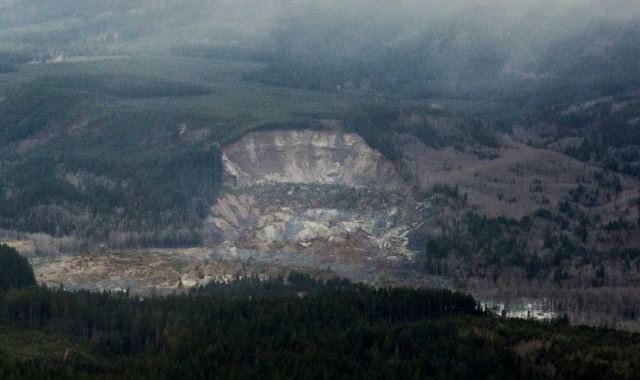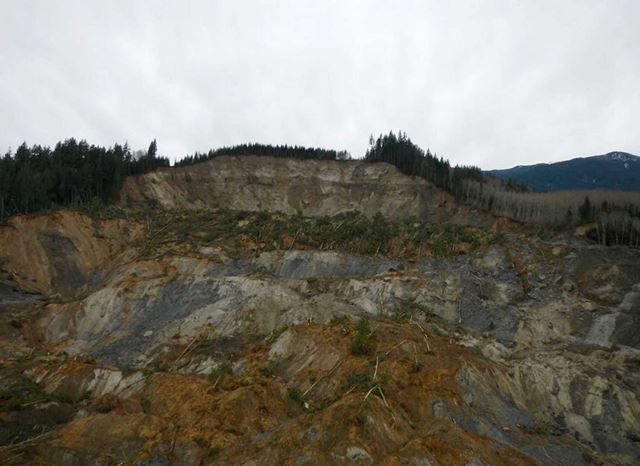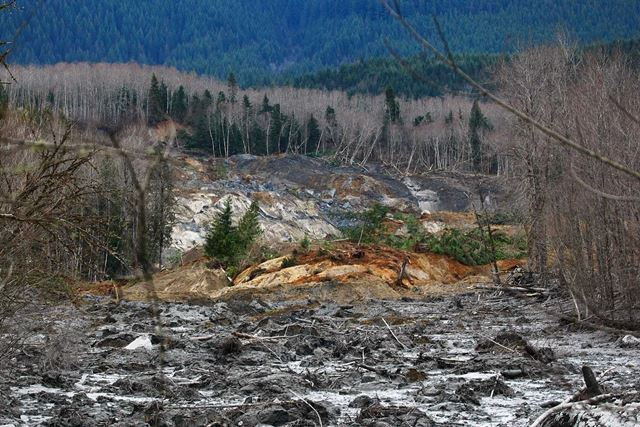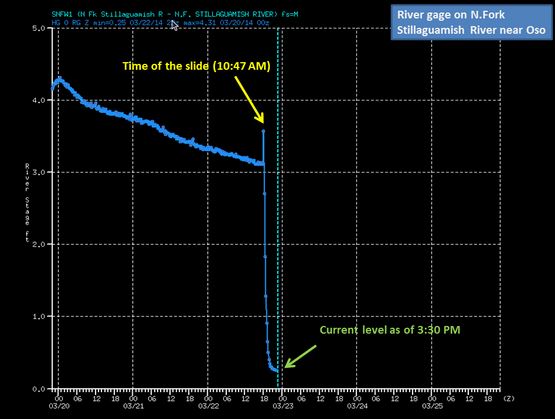23 March 2014
Oso landslide in Washington State: three people killed and the river is blocked
Posted by Dave Petley
Oso landslide
A very large landslide occurred yesterday morning near to the town on Oso in Washington State, USA. Unfortunately, three people have been killed by the Oso landslide, and newspaper reports suggest that three survivors, including a six months old boy, are in a critical condition, and that two more people have been seriously injured. At present it is not clear as to whether there may be other victims in the landslide debris.
The best set of images of the slide is to be found on the Seattle Pi website, which includes this overview shot:

Image from Seattle Pi
..
The landslide is complex, but appears to have occurred in weak sedimentary deposits; I would guess with a glacial origin. The landslide appears to have a large arcuate scar with a large, rotated and partly disaggregated central block:

Image from Seattle Pi
..
The toe of the landslide appears to have fluidised and flowed laterally (i.e. up and down the valley), suggesting that the landslide would have been rapid and highly destructive, which accounts for the fatalities:

Image from Seattle Pi
There can be little doubt that this is a rainfall triggered landslide, though given its size there might have been a substantial time gap between the triggering event and the slide itself whilst pore pressures built up. An interesting aspect of the landslide is that the valley is now blocked. National Weather Service Seattle tweeted the gauging station data for the north fork of the Stillaguamish River downstream from the landslide:
..
The very rapid decline in water depth is very clearly apparent, but note also the short but dramatic spike in water depth immediately after the landslide, presumably caused by a surge of water induced by the slip entering the river. A key management task over the next few days is likely to be the creation of a bypass channel to reopen the river.
Acknowledgements
Thanks to John Garver, Lee Allsion, Peter Weisinger and Bryan O’Sullivan for helping me to track down the material for this post.



 Dave Petley is the Vice-Chancellor of the University of Hull in the United Kingdom. His blog provides commentary and analysis of landslide events occurring worldwide, including the landslides themselves, latest research, and conferences and meetings.
Dave Petley is the Vice-Chancellor of the University of Hull in the United Kingdom. His blog provides commentary and analysis of landslide events occurring worldwide, including the landslides themselves, latest research, and conferences and meetings.
For background about the geology of this slide, see: http://washingtonlandscape.blogspot.com/